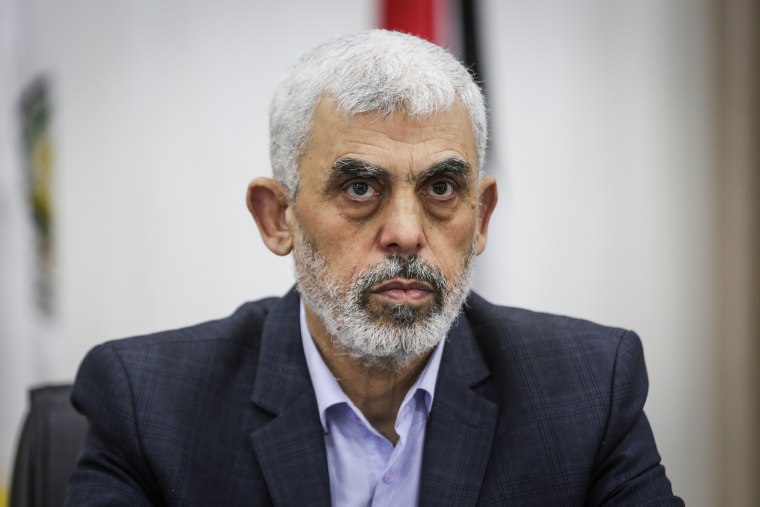Current Leadership and Structure: Israel Hamas Leader

Hamas, a Palestinian Islamist political and militant organization, has a complex leadership structure and a long history of political and military activity. Its current leadership is a reflection of its evolution and its response to the evolving geopolitical landscape.
Current Leadership
The current leader of Hamas is Ismail Haniyeh, who assumed the position of head of the Hamas political bureau in 2017. Haniyeh is a prominent figure within Hamas, known for his role in the organization’s political and social work. He has played a crucial role in negotiating ceasefires with Israel and in representing Hamas internationally.
Organizational Structure, Israel hamas leader
Hamas’s organizational structure is designed to operate effectively both within and outside the Palestinian territories. It comprises several branches and departments, each with specific responsibilities:
* Political Bureau: The Political Bureau is the highest decision-making body within Hamas. It is responsible for setting the organization’s overall strategy and policies.
* Military Wing (Izz ad-Din al-Qassam Brigades): This is the armed wing of Hamas, responsible for carrying out military operations against Israel. It has been responsible for numerous attacks, including rocket attacks on Israeli cities.
* Social and Charitable Organizations: Hamas operates numerous social and charitable organizations that provide services to the Palestinian population. These organizations serve to strengthen Hamas’s support base within Palestinian society.
* International Relations: Hamas maintains international relations with various political and religious groups, seeking to build alliances and garner support for its cause.
Key Policies and Objectives
Hamas’s key policies and objectives have evolved over time, but its core principles remain consistent.
* Resistance to Israeli Occupation: Hamas is committed to resisting the Israeli occupation of Palestinian territories and the establishment of an independent Palestinian state.
* Islamic Governance: Hamas seeks to establish an Islamic state in the Palestinian territories. This involves implementing Islamic law and principles in all aspects of governance.
* Social Justice: Hamas advocates for social justice and equality within Palestinian society, promoting economic and social development.
* International Recognition: Hamas seeks international recognition for its right to self-determination and the establishment of an independent Palestinian state.
Current Geopolitical Landscape
The current geopolitical landscape has significantly impacted Hamas’s actions and its relationship with other actors in the region.
* Internal Palestinian Division: The ongoing division between Hamas and Fatah, the dominant political party in the West Bank, has weakened Palestinian unity and hindered efforts to achieve a lasting peace with Israel.
* Regional Conflicts: The conflicts in Syria and Yemen have diverted attention and resources away from the Palestinian issue, creating challenges for Hamas’s efforts to maintain its support base.
* International Pressure: International pressure on Hamas to renounce violence and recognize Israel has intensified in recent years, making it more difficult for the organization to pursue its objectives.
* The Rise of Iran: The growing influence of Iran in the region has provided Hamas with financial and military support, but it has also created tensions with other regional powers.
Israel hamas leader – The Israeli-Hamas conflict, a festering wound on the landscape of the Middle East, continues to bleed. Negotiations, like the fragile threads of a worn tapestry, unravel easily. Perhaps a moment of respite could be found in the simple act of yellow wingback chair cover design, a reminder of the domestic, the mundane, a world far removed from the brutality of war.
But reality, like a shadow, lingers. The conflict, a monstrous beast, devours all in its path, leaving behind only the echoes of lost hope and shattered dreams.
The political landscape of the Middle East is a tapestry woven with threads of conflict and negotiation, with the Israeli-Palestinian conflict being a particularly complex and enduring knot. At the heart of this conflict lie figures like the leaders of Hamas and Israel, whose every move reverberates through the region.
Finding the right balance in this volatile situation is like determining the perfect chair height for a 30 inch table – a seemingly simple matter, but one that can profoundly impact the overall experience. The decisions made by these leaders, like the placement of a chair at a table, can have far-reaching consequences for the lives of millions.
